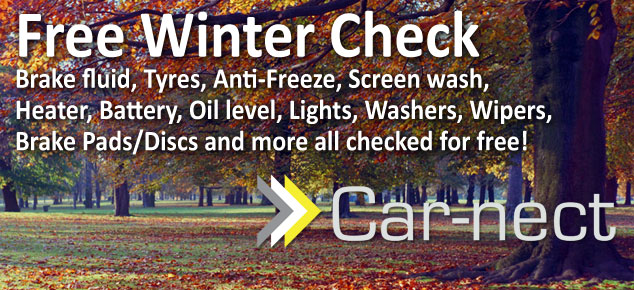Finding the right tyres for your car and ensuring they are to a satisfactory and legal standard is essential for keeping you safe on the road, and by doing this it will also improve your driving experience.
In the UK you are required by law to replace your tyres when the tread depth reaches 1.6mm or less and they must not have any cuts, bulges or cord/ply showing.
If you are uncertain of what condition your tyres are in, check with your local garage and they’ll advise you accordingly.
In the UK you are required by law to replace your tyres when the tread depth reaches 1.6mm or less and they must not have any cuts, bulges or cord/ply showing.
If you are uncertain of what condition your tyres are in, check with your local garage and they’ll advise you accordingly.
FINDING THE RIGHT TYRE
Before looking for new tyres you need to find out what type and size of tyre your vehicle requires, you can find the recommended tyre size and road speed in your vehicle’s manufacturer’s specifications. If you don’t have this information, then refer to the size on the tyre sidewall or consult your local garage.
It’s important to note that although a tyre’s brand name may not be well known that does not necessarily mean the tyre build quality is poor and although two different sized tyres may be of the same brand that does not guarantee they are of the same quality. In the EU tyres are not required to have a wear rating as they are in America. It may be beneficial to buy tyres that are marketed for America as well as the EU, thus have a wear rating e.g. Nexen Tyres.
Please note: if you have bought a second hand car there is no guarantee that the tyres on the vehicle are to the manufacturer’s recommendation therefore, if you are ever in doubt consult your local garage.
See below for an explanation of what the writing on your vehicle‘s tyres means:
205/65 R 95 V
205: This is the width of the tyre tread in millimetres
65: Is the height of the sidewall as a percentage of the tyre tread, in this instance 65% of 205mm
R: R stands for radial; this is the construction of the tyre
16: The diameter of the tyre’s inner rim in inches
95: Is the load rating of the tyre, this is the weight the tyre is designed to support.
V: This letter refers to the maximum speed the tyre is designed to withstand when the vehicle if fully loaded (see below for the most common speed rating lettering)
S – 112 mph
T – 118 mph
H - 130 mph
V – 149 mph
Z – 150+ mph
W – 168 mph
Y – 186 mph
WHAT TYRES DO YOU REQUIRE?
If you drive a few thousand miles a year, mostly in a rural area, and never drive over 100mph then standard tyres in mid-price range should suffice. However, if you normally travel on motorways or at speed, finding the right tyre with an extended tread life will allow you to avoid changing your tyres as often, saving you money and time in the long run. Consult your local garage for advice.
Another factor to take into consideration, when finding the right type of tyre for your vehicle, is the typical weather for your location. In the UK, rain and wet weather is common, so it is best to find tyres that are well suited to provide good grip in this type of weather and still perform well.
ADVICE: It is good practice to rotate the tyres in the best condition to the front of your vehicle, this is because the majority of vehicles are front wheel drive, therefore the front wheels tend to wear faster as they are do a larger amount of work compared to the rear i.e. steer and do most of the braking.
NEW EU TYRE LABELLING REGULATION (EC 1222/2009) As of 1st November 2012, all tyres manufactured after 1st July 2012 are required to have a rating for 1 - Fuel efficiency, 2 -Wet grip and 3 – External rolling noise.
Fuel Efficiency – this is graded using a scale of A – G. ‘A’ being the most efficient and ‘G’ being the least efficient. [‘D’ is not used in this grading].
Wet Grip, also known as braking performance on a wet road – is graded using a scale of A – G. ‘A’ being shortest braking distance and ‘G’ being longest. [‘D’ & ‘G’ are not used in this grading].
External Rolling Noise – this is measured in decibels (dB) and categorised in 3 classes which are illustrated by 3 waves. 1 wave being a quieter tyre and 3 being louder.
Spare Tyres Is a spare tyre part of the MOT test? The simple answer is no, however under the Road Traffic Act it is illegal to carry a defective spare tyre.
Space saver tyres are legal to carry as a spare and to use on the vehicle in the short-term, ie until it is convenient to get a replacement tyre fitted, but if the vehicle is presented for an MOT with a space saver tyre fitted then it would fail as a result.
If the spare tyre is suspended in a cage under the vehicle these can be subject to theft and there are some excellent locking devices which can be fitted to eliminate this problem.
Before looking for new tyres you need to find out what type and size of tyre your vehicle requires, you can find the recommended tyre size and road speed in your vehicle’s manufacturer’s specifications. If you don’t have this information, then refer to the size on the tyre sidewall or consult your local garage.
It’s important to note that although a tyre’s brand name may not be well known that does not necessarily mean the tyre build quality is poor and although two different sized tyres may be of the same brand that does not guarantee they are of the same quality. In the EU tyres are not required to have a wear rating as they are in America. It may be beneficial to buy tyres that are marketed for America as well as the EU, thus have a wear rating e.g. Nexen Tyres.
Please note: if you have bought a second hand car there is no guarantee that the tyres on the vehicle are to the manufacturer’s recommendation therefore, if you are ever in doubt consult your local garage.
See below for an explanation of what the writing on your vehicle‘s tyres means:
205/65 R 95 V
205: This is the width of the tyre tread in millimetres
65: Is the height of the sidewall as a percentage of the tyre tread, in this instance 65% of 205mm
R: R stands for radial; this is the construction of the tyre
16: The diameter of the tyre’s inner rim in inches
95: Is the load rating of the tyre, this is the weight the tyre is designed to support.
V: This letter refers to the maximum speed the tyre is designed to withstand when the vehicle if fully loaded (see below for the most common speed rating lettering)
S – 112 mph
T – 118 mph
H - 130 mph
V – 149 mph
Z – 150+ mph
W – 168 mph
Y – 186 mph
WHAT TYRES DO YOU REQUIRE?
If you drive a few thousand miles a year, mostly in a rural area, and never drive over 100mph then standard tyres in mid-price range should suffice. However, if you normally travel on motorways or at speed, finding the right tyre with an extended tread life will allow you to avoid changing your tyres as often, saving you money and time in the long run. Consult your local garage for advice.
Another factor to take into consideration, when finding the right type of tyre for your vehicle, is the typical weather for your location. In the UK, rain and wet weather is common, so it is best to find tyres that are well suited to provide good grip in this type of weather and still perform well.
ADVICE: It is good practice to rotate the tyres in the best condition to the front of your vehicle, this is because the majority of vehicles are front wheel drive, therefore the front wheels tend to wear faster as they are do a larger amount of work compared to the rear i.e. steer and do most of the braking.
NEW EU TYRE LABELLING REGULATION (EC 1222/2009) As of 1st November 2012, all tyres manufactured after 1st July 2012 are required to have a rating for 1 - Fuel efficiency, 2 -Wet grip and 3 – External rolling noise.
Fuel Efficiency – this is graded using a scale of A – G. ‘A’ being the most efficient and ‘G’ being the least efficient. [‘D’ is not used in this grading].
Wet Grip, also known as braking performance on a wet road – is graded using a scale of A – G. ‘A’ being shortest braking distance and ‘G’ being longest. [‘D’ & ‘G’ are not used in this grading].
External Rolling Noise – this is measured in decibels (dB) and categorised in 3 classes which are illustrated by 3 waves. 1 wave being a quieter tyre and 3 being louder.
Spare Tyres Is a spare tyre part of the MOT test? The simple answer is no, however under the Road Traffic Act it is illegal to carry a defective spare tyre.
Space saver tyres are legal to carry as a spare and to use on the vehicle in the short-term, ie until it is convenient to get a replacement tyre fitted, but if the vehicle is presented for an MOT with a space saver tyre fitted then it would fail as a result.
If the spare tyre is suspended in a cage under the vehicle these can be subject to theft and there are some excellent locking devices which can be fitted to eliminate this problem.


 RSS Feed
RSS Feed

